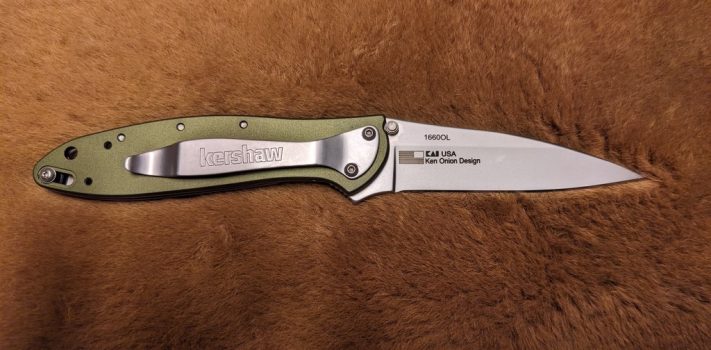“Going to war without France is like going hunting without an accordion.” – Norman Schwarzkopf
- Ad Trekker Water Station 1Gal Per MinuteCall us if you have Questions 800-627-3809
- Ad California Legal Rifles & Pistols!WBT makes all popular rifles compliant for your restrictive state. Choose from a wide range of top brands made compliant for your state.
Preparedness Notes for Tuesday — October 28, 2025
On October 28, 1628, after a long siege, the Huguenot bulwark at La Rochelle surrendered to Catholic prelate Cardinal Richelieu. A large diaspora of Huguenots (French Calvinist Reformed Protestants) began soon after. They became known as Europe’s first refugees. Facing severe persecution in France and Wallonia, Huguenots arrived in South Africa as early as 1671. By 1692, more than 200 French Huguenots had settled at the Cape of Good Hope. More than 700 Huguenot refugees arrived in Virginia in 1690s. With their wide diaspora, Huguenot surnames are now fairly common in England, Canada, South Africa, Zimbabwe, the United States, and Australia. The majority of Australians with French ancestry are Huguenot descendants. One of Avalanche Lily’s relatives in South Africa has the Huguenot surname Malherbe. – JWR
—
And on October 28, 2020, a new coral reef 500 meters (1,640 ft) high, taller than the Empire State Building, was discovered north of Australia’s Great Barrier Reef.
—
Some great news! The fine folks usaBerkeyFilters.com just bought the Harvest Guard reusable canning lids business. It is great to hear that these important products for preppers and homesteaders will continue to be available. And, given the solid reputation for customer service at usaBerkeyFilters.com, I’m confident that the quality control, fast shipping, and customer service at Harvest Guard will be held to the highest standards. Please note that they are offering a special 25%-off coupon code, just until November 5th, 2025. Enter the code LIDS25 at checkout, to get that special discount.- JWR
Today’s feature piece is by SurvivalBlog staff member Tom Christianson. He is a full-time church pastor and a part-time writer.
- Ad Click Here --> Civil Defense ManualNOW BACK IN STOCK How to protect, you, your family, friends and neighborhood in coming times of civil unrest… and much more!
- Ad Don't wait - get the ultimate US-made ultra-high performance US-made SIEGE Stoves and stunning hand-crafted SIEGE belts for Christmas. For stocking-stuffers see our amazing fire-starters. Gifts that can save lives. Big Sale!Every bespoke SIEGE buckle goes through an hours-long artisanal process resulting in a belt unlike anything else, with blazing fast performance and looks and comfort to match.
A Knife, A Clip, and a Counterfeit, by Thomas Christianson
The Knife
The Kershaw Leek 1660 OL is an outstanding knife for everyday carry (EDC). It has a shaving-sharp, three-inch, hollow-ground, drop-point blade made out of 14C28N stainless steel with a four-inch, anodized-aluminum handle. The spine of the blade is 0.09 inches thick at its widest point.
The assisted opening mechanism accelerates the blade decisively into engagement with the liner lock with a satisfying snap when the flipper is activated. A tip lock secures the blade whenever it is important to ensure against accidental opening.
The knife is made in the USA, and was on sale for $99.99 at the time of this writing at https://kershaw.kaiusa.com/leek-olive.html
Continue reading“A Knife, A Clip, and a Counterfeit, by Thomas Christianson”
- Ad Ready Made Resources, Trijicon Hunter Mk2$2000 off MSRP, Brand New in the case
- Ad USA Berkey Water Filters - Start Drinking Purified Water Today!#1 Trusted Gravity Water Purification System! Start Drinking Purified Water now with a Berkey water filtration system. Find systems, replacement filters, parts and more here.
SurvivalBlog’s News From The American Redoubt
This weekly column features news stories and event announcements from around the American Redoubt region. (Idaho, Montana, eastern Oregon, eastern Washington, and Wyoming.) Much of the region is also more commonly known as The Inland Northwest. We also mention companies located in the American Redoubt region that are of interest to preppers and survivalists. Today, reports of a helicopter crash in eastern Montana that was national news. (See the Montana section.)
Idaho
Shoshone County sheriff resigns after off-duty crash. JWR’s Comment: Something tells me that we haven’t yet been told the whole story about her car crash.
o o o
Don’t trust A.I. for hunting and fishing regulations.
o o o
Murder suspect in custody after overnight manhunt.
o o o
Coeur d’Alene Police and schools crack down on electric bikes and scooters as student injuries rise.
Continue reading“SurvivalBlog’s News From The American Redoubt”
- Ad Survival RealtyFind your secure and sustainable home. The leading marketplace for rural, remote, and off-grid properties worldwide. Affordable ads. No commissions are charged!
- Ad LifeSaver 20K JerryCan Water PurifierThe best water jerrycan you can buy on the market! Mention Survivalblog for a Free Filter ($130 Value)
The Editors’ Quote of the Day:
- Ad Civil Defense ManualClick Here --> The Civil Defense Manual... The A to Z of survival. Looks what's in it... https://civildefensemanual.com/whats-in-the-civil-defense-manual/
- Ad USA Berkey Water Filters - Start Drinking Purified Water Today!#1 Trusted Gravity Water Purification System! Start Drinking Purified Water now with a Berkey water filtration system. Find systems, replacement filters, parts and more here.
Preparedness Notes for Monday — October 27, 2025
On October 27, 1553, Condemned as a heretic, Spanish-born physician and Christian church reformer Michael Servetus was burned at the stake, just outside Geneva.
—
October 27, 1702: British troops plundered St Augustine, Florida.
—
October 27th 1858: The birthday of President Theodore “Teddy” Roosevelt. He died January 6, 1919.
—
Some great news! There are new owners of the famed Harvest Guard company — makers of reusable canning lids. The company is now owned by the same folks who own and operate USA Berkey Filters. They are generously providing a new prize that was just added to the First Prize package for the SurvivalBlog Nonfiction Writing Contest: A 200-Piece Bulk Mix Pack of their Regular and Wide-Mouth Reusable Canning Jar Lids & Gaskets. This is a $161 + shipping value.
—
SurvivalBlog Writing Contest
Today we present another entry for Round 121 of the SurvivalBlog non-fiction writing contest. The prizes for this round include:
First Prize:
- A Gunsite Academy Three Day Course Certificate. This can be used for any of their one, two, or three-day course (a $1,095 value),
- A Peak Refuel “Wasatch Pack” variety of 60 servings of premium freeze-dried breakfasts and dinners in individual meal pouches — a whopping 21,970 calories, all made and packaged in the USA — courtesy of Ready Made Resources (a $350 value),
- American Gunsmithing Institute (AGI) is providing a $300 certificate good towards any of their DVD training courses. Their course catalog now includes their latest Survival Gunsmithing course.
- HSM Ammunition in Montana is providing a $350 gift certificate. The certificate can be used for any of their products.
- Harvest Guard is providing a 200-Piece Bulk Mix Pack of their Regular and Wide-Mouth Reusable Canning Jar Lids & Gaskets. This is a $161 + shipping value.
Second Prize:
- A SIRT STIC AR-15/M4 Laser Training Package, courtesy of Next Level Training, that has a combined retail value of $679
- Two 1,000-foot spools of full mil-spec U.S.-made 750 paracord (in-stock colors only) from TOUGHGRID.com (a $287 value).
- Preparedness author Jennifer Rader is offering a $200 purchase credit for any of her eight published food storage and medical preparedness books, including the
- A transferable $150 FRN purchase credit from Elk Creek Company, toward the purchase of any pre-1899 antique gun. There is no paperwork required for delivery of pre-1899 guns into most states, making them the last bastion of gun purchasing privacy!
Third Prize:
- A Berkey Light water filter, courtesy of USA Berkey Filters (a $305 value),
- Two sets of The Civil Defense Manual, (in two volumes) — a $193 value — kindly donated by the author, Jack Lawson.
- A $200 credit from Military Surplus LLC that can be applied to purchase and/or shipping costs for any of their in-stock merchandise, including full mil-spec ammo cans, Rothco clothing and field gear, backpacks, optics, compact solar panels, first aid kits, and more.
- A transferable $150 FRN purchase credit from Elk Creek Company, toward the purchase of any pre-1899 antique gun.
—
More than $970,000 worth of prizes have been awarded since we started running this contest. Round 121 ends on November 30th, so get busy writing and e-mail us your entry. Remember that there is a 1,500-word minimum, and that articles on practical “how-to” skills for survival have an advantage in the judging. In 2023, we polled blog readers, asking for suggested article topics. Please refer to that poll if you haven’t yet chosen an article topic.
- Ad STRATEGIC RELOCATION REALTYFOR SALE: Self-sustaining Rural Property situated meticulously in serene locales distant from densely populated sanctuary cities. Remember…HISTORY Favors the PREPARED!
- Add Your Link Here
Loaves, Fishes, Tree Bark, Seeds, and Knowledge – Part 8, by The Chemical Engineer
(Continued from Part 7. This concludes the article.)
4 – How Much Food Can We Afford To Share With Others?
Now, let’s consider the controversial topic of sharing our limited food resources with a neighborhood group. Think of this option like investing money in start-up companies, high risk for the chance at high rewards but in this case the money is our food and the companies are people that need some of our food to have the strength to work on survival projects with us. I will do my best to outline facts and calculations that will help us to consider our options wisely.
First, this will work best if we have a very deep larder. If we only have a month or two supply of food, we don’t have enough for a Type 2 Emergency (T2E) for our own family and friends let alone to share with others. If we have a 6-month or more supply for ourselves and our own family then we start to have some options.Continue reading“Loaves, Fishes, Tree Bark, Seeds, and Knowledge – Part 8, by The Chemical Engineer”
Recipe of the Week:
The following two-day recipe for Barley and Pork Hocks is from SurvivalBlog reader Richard T.
Equipment: A small cast iron pot, a soup pot, and a rectangular glass cake pan (or a similar pan).
Ingredients
-
Two fresh pork hocks
-
½ cup of barley grain
-
½ cup of white vinegar
-
Cayenne or hot pepper flakes (to taste)
-
Pepper (to taste)
-
Salt (to taste)
Directions
-
Day one: Simmer a couple of fresh pork hocks in ½” of water in a lidded cast iron pot for half a day until the meat can be separated from the bones.
-
Refrigerate overnight. (The extracted bones can be used for bone broth.)
-
Day two: Cook barley, adding enough water, time and heat to bring it to a soft mushy texture. I like to add salt and peppercorns at this time.
-
While the barley is cooking, grind the now-cooled pork hock meat (including the rind) through a meat grinder, such as a Kitchen-Aid meat grinder attachment, through first the large hole plate and secondly the smaller hole plate.
-
While the barley is still hot, add the ground-up pork hock, the white vinegar, and a hefty dash of cayenne or red pepper flakes.
-
Mix thoroughly and spread into a pan to a level 1”, more or less.
-
Refrigerate, and let it gel.
-
Cut into squares and use as a snack or as an additive to a stew, soup, or other dish, or serve it by itself.
STORAGE
Keep refrigerated. it can also be frozen.
—
Do you have a well-tested recipe that would be of interest to SurvivalBlog readers? In this weekly recipe column, we place emphasis on recipes that use long-term storage foods, recipes for wild game, dutch oven recipes, slow cooker recipes, and any recipes that use home garden produce. If you have any favorite recipes, then please send them via e-mail. Thanks!
SurvivalBlog Graphic of the Week
Today’s graphic: USDA Plant Hardiness Growing Zone Chart. (Graphic courtesy of Oregon State University (OSU) and the U.S. Department of Agriculture (USDA).
The thumbnail below is click-expandable.
—
Please send your graphics or graphics links to JWR. (Either via e-mail or via our Contact form.) Any graphics that you send must either be your own creation or uncopyrighted.
The Editors’ Quote of the Day:
“When I go to farms or little towns, I am always surprised at the discontent I find. And New York, too often, has looked across the sea toward Europe. And all of us who turn our eyes away from what we have are missing life.” – Norman Rockwell
Preparedness Notes for Sunday — October 26, 2025
Reader D.S.V. wrote to tell me of the passing of actress June Lockhart, at age 100. JWR’s Comment: Not mentioned in the brief obituary is that June Lockhart was a devoted Christian.
—
On October 26, 1826, the Erie Canal between the Hudson River and Lake Erie opened.
—
October 26, 1881: A feud between the Earp brothers (Wyatt, Virgil, and Morgan) and an outlaw gang led by Ike Clanton escalated into a celebrated gunfight at the O.K. Corral in Tombstone, Arizona Territory.
—
Today is the birthday of Henry Deringer (October 26, 1786 – February 28, 1868) was an American gunsmith. He is best known for inventing and giving his name to the very compact Deringer pistol.
—
SurvivalBlog Writing Contest
Today we present another entry for Round 121 of the SurvivalBlog non-fiction writing contest. The prizes for this round include:
First Prize:
- A Gunsite Academy Three Day Course Certificate. This can be used for any of their one, two, or three-day course (a $1,095 value),
- A Peak Refuel “Wasatch Pack” variety of 60 servings of premium freeze-dried breakfasts and dinners in individual meal pouches — a whopping 21,970 calories, all made and packaged in the USA — courtesy of Ready Made Resources (a $350 value),
- American Gunsmithing Institute (AGI) is providing a $300 certificate good towards any of their DVD training courses. Their course catalog now includes their latest Survival Gunsmithing course.
- HSM Ammunition in Montana is providing a $350 gift certificate. The certificate can be used for any of their products.
Second Prize:
- A SIRT STIC AR-15/M4 Laser Training Package, courtesy of Next Level Training, that has a combined retail value of $679
- Two 1,000-foot spools of full mil-spec U.S.-made 750 paracord (in-stock colors only) from TOUGHGRID.com (a $287 value).
- Preparedness author Jennifer Rader is offering a $200 purchase credit for any of her eight published food storage and medical preparedness books, including the
- A transferable $150 FRN purchase credit from Elk Creek Company, toward the purchase of any pre-1899 antique gun. There is no paperwork required for delivery of pre-1899 guns into most states, making them the last bastion of gun purchasing privacy!
Third Prize:
- A Berkey Light water filter, courtesy of USA Berkey Filters (a $305 value),
- Two sets of The Civil Defense Manual, (in two volumes) — a $193 value — kindly donated by the author, Jack Lawson.
- A $200 credit from Military Surplus LLC that can be applied to purchase and/or shipping costs for any of their in-stock merchandise, including full mil-spec ammo cans, Rothco clothing and field gear, backpacks, optics, compact solar panels, first aid kits, and more.
- A transferable $150 FRN purchase credit from Elk Creek Company, toward the purchase of any pre-1899 antique gun.
—
More than $970,000 worth of prizes have been awarded since we started running this contest. Round 121 ends on November 30th, so get busy writing and e-mail us your entry. Remember that there is a 1,500-word minimum, and that articles on practical “how-to” skills for survival have an advantage in the judging. In 2023, we polled blog readers, asking for suggested article topics. Please refer to that poll if you haven’t yet chosen an article topic.
Loaves, Fishes, Tree Bark, Seeds, and Knowledge – Part 7, by The Chemical Engineer
(Continued from Part 6.)
3.7 – Improving Our Soil Before A T2E
Those with experience growing crops have learned that the fertility of their soil or the ability to add fertilizer has a large impact on crop yields. The best option to prepare for an emergency is to add fertility now into our soil. It is like keeping our vehicles at least half full of gas, it will be ready to use when we need it. When I first started gardening I skimped on improving my soil and most of my harvests were mediocre. When I spent more money and time to improve my soil, it became easier to grow a more abundant garden. I am a fan of the Square Foot Gardening Methods to make my garden soil but you can find many great ideas on making great garden soil. Choose one and go for it. See the Square Foot Gardening Foundation website if you want to try this approach. We could also buy land that has good natural fertility to start a farming on. Regardless of our approach I recommend investing in soil now that so we can successfully grow crops now and in the future.
3.71 – Composting
If we or our family/friends have lawn clippings, cardboard boxes/packaging and food waste we can start composting now to make great soil at home. Compost is something we can add to our existing soil to improve its fertility. There are 4 main purpose of compost. The first is to provide a soil structure that is easy for roots to spread out in. Root are limited in compact soil. They do best in fluffier more porous soil. Second, compost will help with water retention and allow for good drainage. This helps our gardens use water more efficiently. Plants need to be in the Goldilocks zone for water, not too little and not too much. In normal times this helps to avoid wasting water and to have better gardens. In an emergency it will help our watering last longer which will save time and energy in a world where we are hauling water to our gardens and hand watering. Third, it provides crops nutrients and can act as a nutrient sponge. The big three nutrients plants need are nitrogen, phosphorus, and potassium. Compost will provide these and other nutrients but it will also provide porous organic material to absorb and time release these nutrients back to the plants. Fourth, compost can improve microbial activity of soil. Microbes improve soil by releasing nutrients, improving the soil structure, and helping root growth. Compost has a similar positive impact for microbes as it does for nutrients. Compost add surface area for microbe housing, space to grow, as wells as organic material for microbes to eat. Compost is also full of beneficial microbes to revitalize the concentration in our soil.Continue reading“Loaves, Fishes, Tree Bark, Seeds, and Knowledge – Part 7, by The Chemical Engineer”
JWR’s Meme Of The Week:
The latest meme created by JWR:
Meme Text:
Glock Has Announced Their New V-Series Pistols To Replace Their “Readily Convertible” Original Designs
It Would Have Been Less Expensive To Just Send Gavin Newsom A Chest Full Of Austrian Gold Coins
Video News Link:
Why Is Everyone So Mad About the New Glock V Series Pistol?
Notes From JWR: Do you have a meme idea? Just e-mail me the concept, and I’ll try to assemble it. And if it is posted then I’ll give you credit. Thanks!
Permission to repost memes that I’ve created is granted, provided that credit to SurvivalBlog.com is included.
The Editors’ Quote of the Day:
“And it came to pass, when Jesus had made an end of commanding his twelve disciples, he departed thence to teach and to preach in their cities.
Now when John had heard in the prison the works of Christ, he sent two of his disciples,
And said unto him, Art thou he that should come, or do we look for another?
Jesus answered and said unto them, Go and shew John again those things which ye do hear and see:
The blind receive their sight, and the lame walk, the lepers are cleansed, and the deaf hear, the dead are raised up, and the poor have the gospel preached to them.
And blessed is he, whosoever shall not be offended in me.
And as they departed, Jesus began to say unto the multitudes concerning John, What went ye out into the wilderness to see? A reed shaken with the wind?
But what went ye out for to see? A man clothed in soft raiment? behold, they that wear soft clothing are in kings’ houses.
But what went ye out for to see? A prophet? yea, I say unto you, and more than a prophet.
For this is he, of whom it is written, Behold, I send my messenger before thy face, which shall prepare thy way before thee.
Verily I say unto you, Among them that are born of women there hath not risen a greater than John the Baptist: notwithstanding he that is least in the kingdom of heaven is greater than he.
And from the days of John the Baptist until now the kingdom of heaven suffereth violence, and the violent take it by force.
For all the prophets and the law prophesied until John.
And if ye will receive it, this is Elias, which was for to come.
He that hath ears to hear, let him hear.” – Matthew 11:1-15 (KJV)
Preparedness Notes for Saturday — October 25, 2025
60 years ago today, on October 25, 1965: Bobby Hatfield’s solo performance of “Unchained Melody” on The Andy Williams Show went down in music history as perhaps the greatest live television love song performance by a male vocalist ever recorded. The then-25-year-old Hatfield still sounds amazing today, even though the recording was made with a low-quality microphone.
—
This is the birthday of explorer and pilot Admiral Richard Byrd (1888–1957). His autobiography titled Alone is a must-read.
—
SurvivalBlog Writing Contest
Today we present another entry for Round 121 of the SurvivalBlog non-fiction writing contest. The prizes for this round include:
First Prize:
- A Gunsite Academy Three Day Course Certificate. This can be used for any of their one, two, or three-day course (a $1,095 value),
- A Peak Refuel “Wasatch Pack” variety of 60 servings of premium freeze-dried breakfasts and dinners in individual meal pouches — a whopping 21,970 calories, all made and packaged in the USA — courtesy of Ready Made Resources (a $350 value),
- American Gunsmithing Institute (AGI) is providing a $300 certificate good towards any of their DVD training courses. Their course catalog now includes their latest Survival Gunsmithing course.
- HSM Ammunition in Montana is providing a $350 gift certificate. The certificate can be used for any of their products.
Second Prize:
- A SIRT STIC AR-15/M4 Laser Training Package, courtesy of Next Level Training, that has a combined retail value of $679
- Two 1,000-foot spools of full mil-spec U.S.-made 750 paracord (in-stock colors only) from TOUGHGRID.com (a $287 value).
- Preparedness author Jennifer Rader is offering a $200 purchase credit for any of her eight published food storage and medical preparedness books, including the
- A transferable $150 FRN purchase credit from Elk Creek Company, toward the purchase of any pre-1899 antique gun. There is no paperwork required for delivery of pre-1899 guns into most states, making them the last bastion of gun purchasing privacy!
Third Prize:
- A Berkey Light water filter, courtesy of USA Berkey Filters (a $305 value),
- Two sets of The Civil Defense Manual, (in two volumes) — a $193 value — kindly donated by the author, Jack Lawson.
- A $200 credit from Military Surplus LLC that can be applied to purchase and/or shipping costs for any of their in-stock merchandise, including full mil-spec ammo cans, Rothco clothing and field gear, backpacks, optics, compact solar panels, first aid kits, and more.
- A transferable $150 FRN purchase credit from Elk Creek Company, toward the purchase of any pre-1899 antique gun.
—
More than $970,000 worth of prizes have been awarded since we started running this contest. Round 121 ends on November 30th, so get busy writing and e-mail us your entry. Remember that there is a 1,500-word minimum, and that articles on practical “how-to” skills for survival have an advantage in the judging. In 2023, we polled blog readers, asking for suggested article topics. Please refer to that poll if you haven’t yet chosen an article topic.















